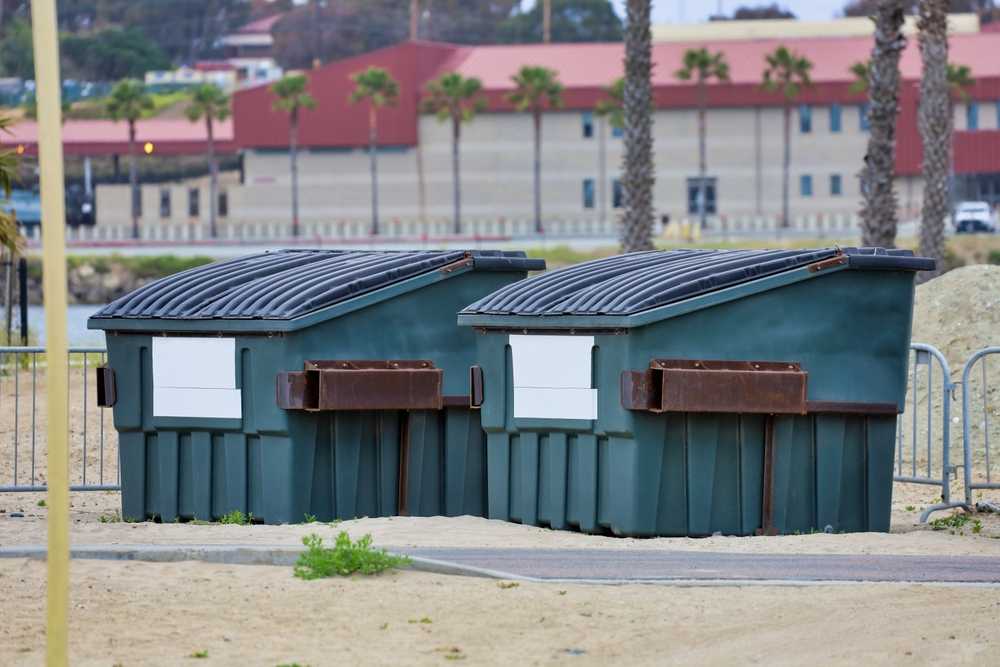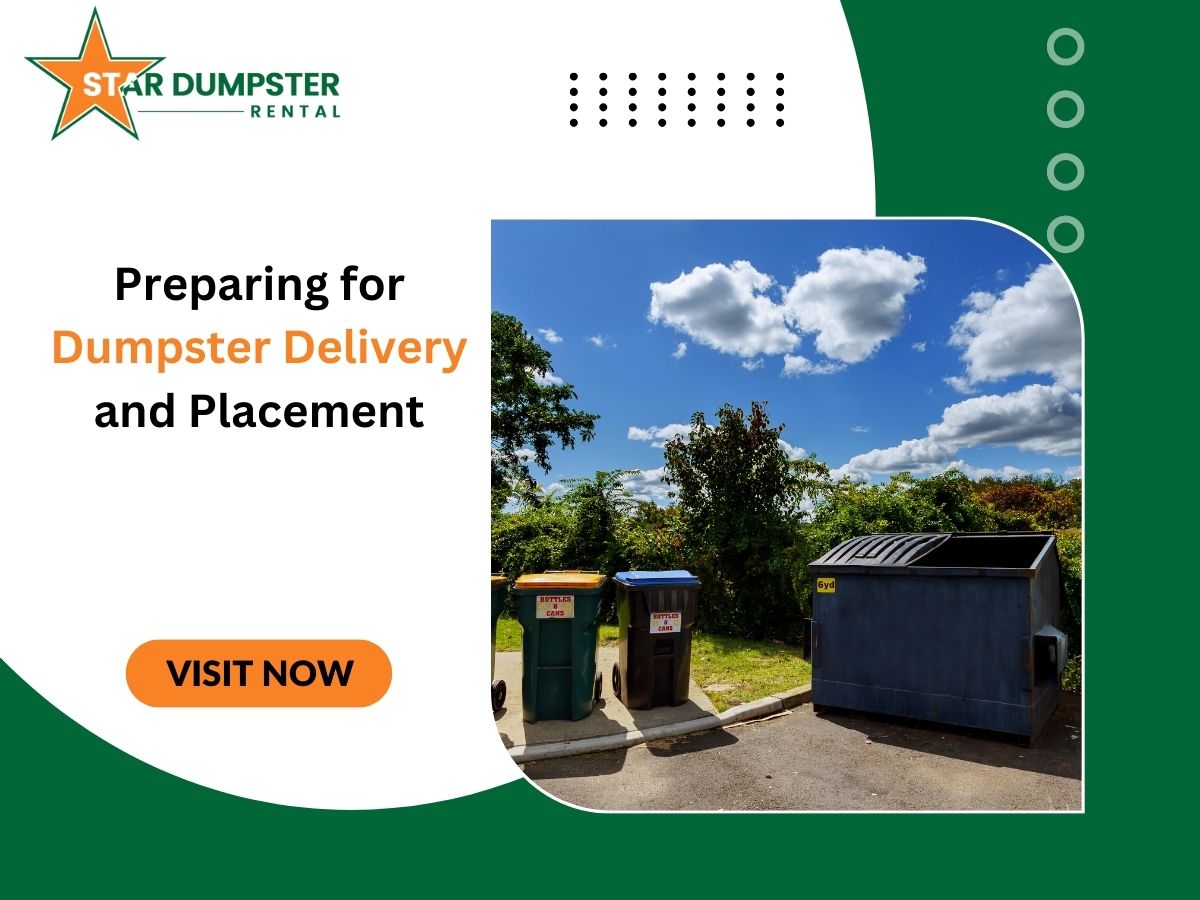Welcome to our guide on ensuring a seamless experience when receiving your dumpster rental. Whether you’re embarking on a renovation project or managing a construction project, understanding the nuts and bolts of site preparation for dumpster delivery and the regulations and permits for dumpster placement is essential. Not only does this knowledge streamline the process, but it also safeguards your project timeline and keeps your project on track.
At Star Dumpster Rentals, we pride ourselves on delivering top-notch dumpster rental services that make managing construction debris and other waste materials as easy as pie. With our guidance, your rental experience will be smooth, efficient, and compliant with local laws, ensuring your focus remains on the success of your project.
How Can You Prepare Your Site for Dumpster Delivery?
- Check the Ground Surface: Ensure the ground is firm enough to support a dumpster. Soft surfaces might need protective material to prevent damage. This is a crucial step for smooth dumpster delivery.
- Ensure Adequate Space: Measure the space where you plan to place the dumpster. There should be sufficient space for the size dumpster you’ve rented, avoiding potential access issues.
- Remove Obstacles: Clear the access route of any low-hanging branches or overhead wires. These can pose a safety hazard and cause unnecessary delays.
- Consider Safety: Keep the area around the planned dumpster spot free of hazards. This preparation ensures the safety of both the delivery personnel and your project crew.
- Effective Communication with the Rental Company: Discuss the specifics of the delivery with your dumpster rental company. Effective communication can prevent misunderstandings and facilitate a hassle-free delivery.
What Are the Key Regulations and Permits for Dumpster Placement?
Local Regulations
Understanding your local regulations is essential. Placing a dumpster on public property often requires a permit, while private property typically has fewer restrictions. Always check with your local authorities to avoid fines.
Permit Acquisition
Acquiring the right permits is a must if you’re planning to place your dumpster on a public space. The process can vary by location, so contacting your local municipality early in your project is advisable.
Size and Duration Considerations
The size of your dumpster and the length of the rental period might also be regulated. Larger dumpsters and longer rental periods often require special attention to compliance with local laws.
Safety and Accessibility
Regulations also cover safety aspects and accessibility. Ensure your dumpster does not block public pathways or create a safety hazard in your area.
Environmental Compliance
Be mindful of hazardous materials which are not permitted in rental dumpsters. Proper disposal of such materials is not just a legal responsibility but also an environmental one.
Why is Proper Dumpster Placement Crucial for Your Project?
- Enhances Efficiency: Properly placed dumpsters help in efficient waste disposal, keeping your site clean and organized.
- Minimizes Risk: Correct placement reduces the risk of accidents, ensuring a safer workspace.
- Avoids Legal Issues: Adhering to local regulations helps avoid fines and legal troubles, ensuring your project doesn’t face interruptions.
- Improves Accessibility: Strategic placement allows for easy access, facilitating quicker and more efficient waste management.
- Protects Property: Ensuring the dumpster is placed on a suitable surface protects the underlying property from damage.

How Does Choosing the Right Dumpster Size Impact Your Project?
Match Dumpster Size to Project Scale
Selecting the right dumpster size is critical. A size too small can result in overflow and additional fees, while a too large one may waste money.
Consider the Type of Debris
The type of material you’re disposing of affects the size choice. Heavier materials might require a stronger or larger dumpster.
Project Duration
The duration of your project should influence the size of the dumpster. Longer projects might benefit from a larger dumpster to accommodate the accumulation of waste.
Space Availability
The available space at your site will also dictate the maximum feasible dumpster size. Always ensure there is adequate room for placement and access.
Cost-Effectiveness
Choosing the right size helps manage costs more effectively, avoiding unnecessary expenses for unused space or extra hauls.
How Do I Choose the Right Dumpster Size for My Project?
Choosing the right dumpster size for your project involves considering several factors:
- Project Size: Estimate the volume of debris your project will generate. Larger projects like major home renovations or big construction sites typically need larger dumpsters.
- Types of Materials: Different materials have different disposal needs. Heavy materials like concrete require sturdier dumpsters with weight limits in mind.
- Space at the Site: Make sure there’s enough room on your site for the dumpster you need. If space is tight, you might need to schedule more frequent pickups with a smaller dumpster.
- Local Regulations: Some areas have restrictions on dumpster sizes and placement, especially in urban settings. Check with your local authorities before deciding.
Wrap It Up!
Choosing the right dumpster rental, preparing your site adequately, and understanding the regulations and permits necessary are fundamental to a smooth and effective waste management process. At Star Dumpster Rentals, we are committed to providing you with a seamless dumpster delivery process, helping keep your project on track and within legal boundaries.
We encourage you to reach out with any questions or to schedule your next dumpster delivery. Let’s keep your project moving forward without a hitch!


